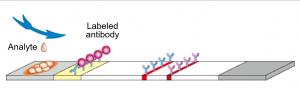From the end of 2019 to the beginning of 2020, Australia experienced an unprecedented scale of forest fires. Not only the case of Australia, but also the exceptionally long monsoon season and numerous typhoons hitting the Korean Peninsula last summer and the severe droughts and large wildfires in the Western United States show many parts of the world suffering from abnormal climates. Many meteorologists conclude that climate change caused by global warming has a significant influence on weather disasters. In other words, if global warming is not resolved, it will not solve the devastating damage caused by the weather.
Facing these problems, countries around the world have begun making moves to reduce greenhouse gas emissions. The new U.S. president, Joe Biden, immediately returned to the Paris Agreement right after the presidental inauguration and announced plans to shut down carbon-emitting power plants by 2035 and achieve ‘Carbon Neutrality’ by 2050 through the introduction of renewable energy policies. Also, the president of South Korea, Moon Jae-in, declared in his New Year’s address in 2021 the country would become carbon neutral by 2050 and said he will shape his plan to promote it in all sectors of society, including energy and industry, within this year.
This chart shows the mole fraction1(emission rate) of greenhouse gases. As you can see, the rate has increased over time. (Data found by public.wmo.int)
In fact, this is not the first time developed countries have made efforts to reduce greenhouse gas emissions. There is a system that stipulates the right to emit six major greenhouse gasses2 for a certain period of time which is called Certified Emission Reduction (CER). Trading is allowed through the market and we call it ‘Certified Emission Reduction Trading’. CER trading is one of the specific implementation measures of the United Nations Climate Change Convention to reduce greenhouse gasses. The concept was created under the three systems of the Kyoto Protocol. If a country emits greenhouse gasses below the emission quota granted, the surplus can be sold to other countries which have exceeded their quota. By allowing the trade of emission rights, institutional flexibility can be secured while inducing countries to voluntarily participate in reducing greenhouse gasses through economic incentives.
So, how is the CER trading going? It is granted by country, but most countries allocate it to companies. Therefore, the trading usually takes place among companies.
By last October, the CER traded through Korea Exchange were 1,189,249 tons, close to ₩594.184 billion. The transaction volume in the first year of the emission market in 2015 was 1,242,097 tons valued at ₩13.891 billion. Through five years, the trading went up 15.4 times in size and 42.8 times in price. In this process, companies focused on minimizing production costs by reducing greenhouse gas emissions by installing greenhouse gas reduction facilities.
In fact, Korea’s chemical company Huchems introduced a new N2O reduction device at its Heezilic acid plant to reduce greenhouse gasses when making subsidiary materials for automobiles and construction. By this, Huchems sold CER to generate ₩35.6 billion in sales. In addition, they went through the CDM business which invests in greenhouse gas reduction projects in developing countries, which allowed them to maximize profits and contribute to the prevention of global warming.
However, just as coins have both sides, there are problems concerning the CER trading system. The European Union (EU) has been in an economic crisis for the past decade, but CER have been granted as usual. This situation has caused supply to be too high for demand. As a result, it was traded at a bargain price, making it cheaper than the cost needed to reduce greenhouse gasses, which allowed companies to freely emit greenhouse gasses. The failure in Europe that proposed the introduction of this system has created great distrust.
Furthermore, each country shows a difference in its aggressiveness in trading carbon credits. The United States is passive in the CER trading system, even though it is the largest emitter of greenhouse gasses after China. Only a few U.S. states have implemented this system, which is seen as` effective in reducing greenhouse gas emissions in other countries and opposed to cutting down their emission rates.
On the contrary, South Korea is considered to have set the highest goal among major countries. Although South Korea was classified as a developing country by the UN Framework Convention on Climate Change in 2012 and did not need to reduce gas emissions, it voluntarily promised to reduce emissions just like developed countries. According to Bloomberg New Energy Finance, the U.S. planned to achieve a gas reduction rate of 8% by 2030, while Korea set its goal of 28% by the same year. This means that South Korea has the strongest greenhouse gas emission regulations for its companies, which has made it difficult for the domestic manufacturing industry to export. This creates a rise in raw material prices, putting them at a disadvantage in price competition compared to companies of other countries. The Federation of Korean Industries has argued that this has already disrupted the attraction of foreign-invested companies for research and development projects. They also expressed concerns about adverse effects, such as suspending new facility investments and reducing outputs.
In the end, it seems that institutional improvements are needed for the CER trading system to effectively achieve its goal. The process of thinking about how to improve the implementation of the system will be a way to prevent global warming.
Chung Yeongyu ygchung00@naver.com
<저작권자 © 홍익대영자신문사, 무단 전재 및 재배포 금지>





